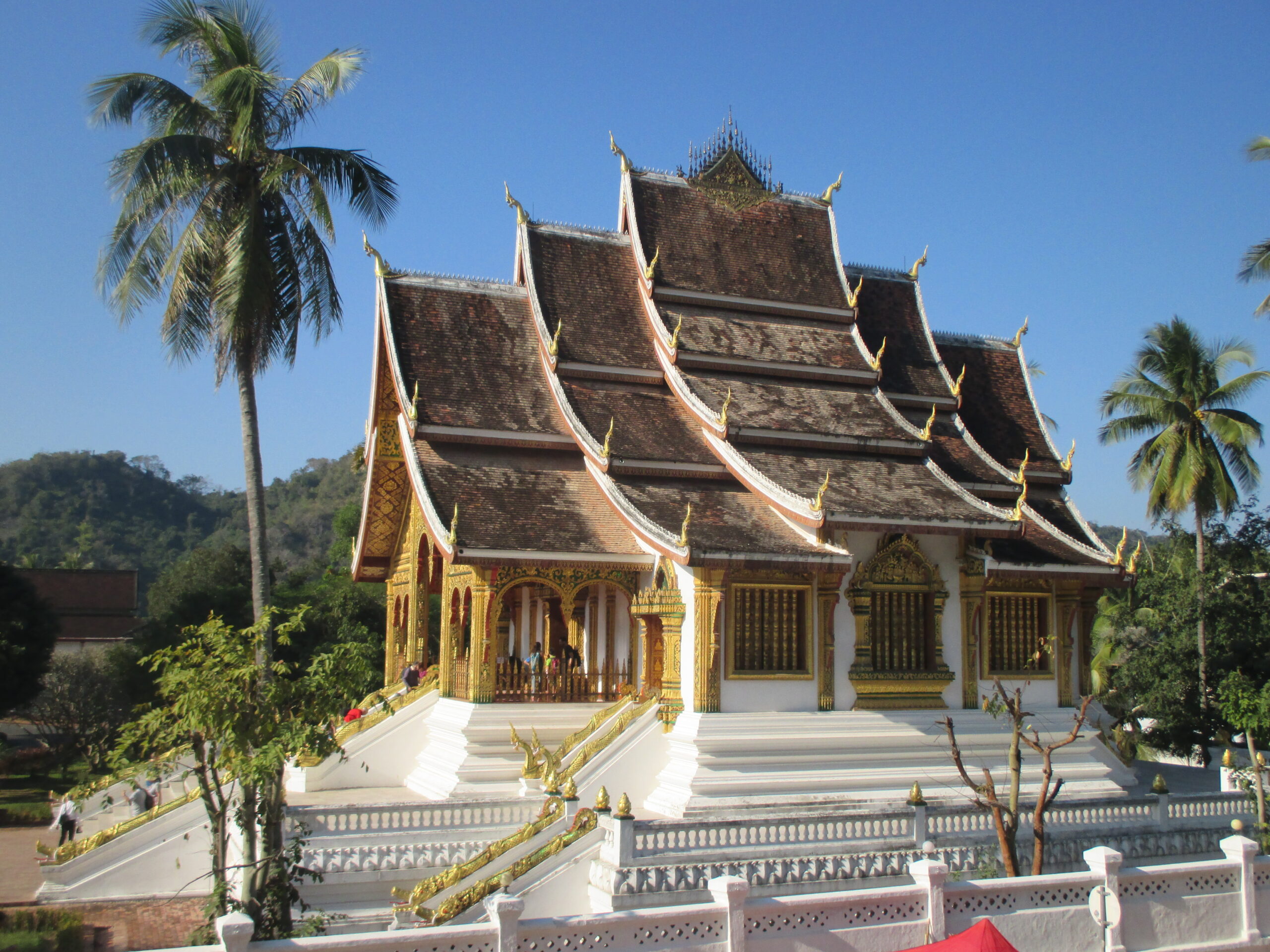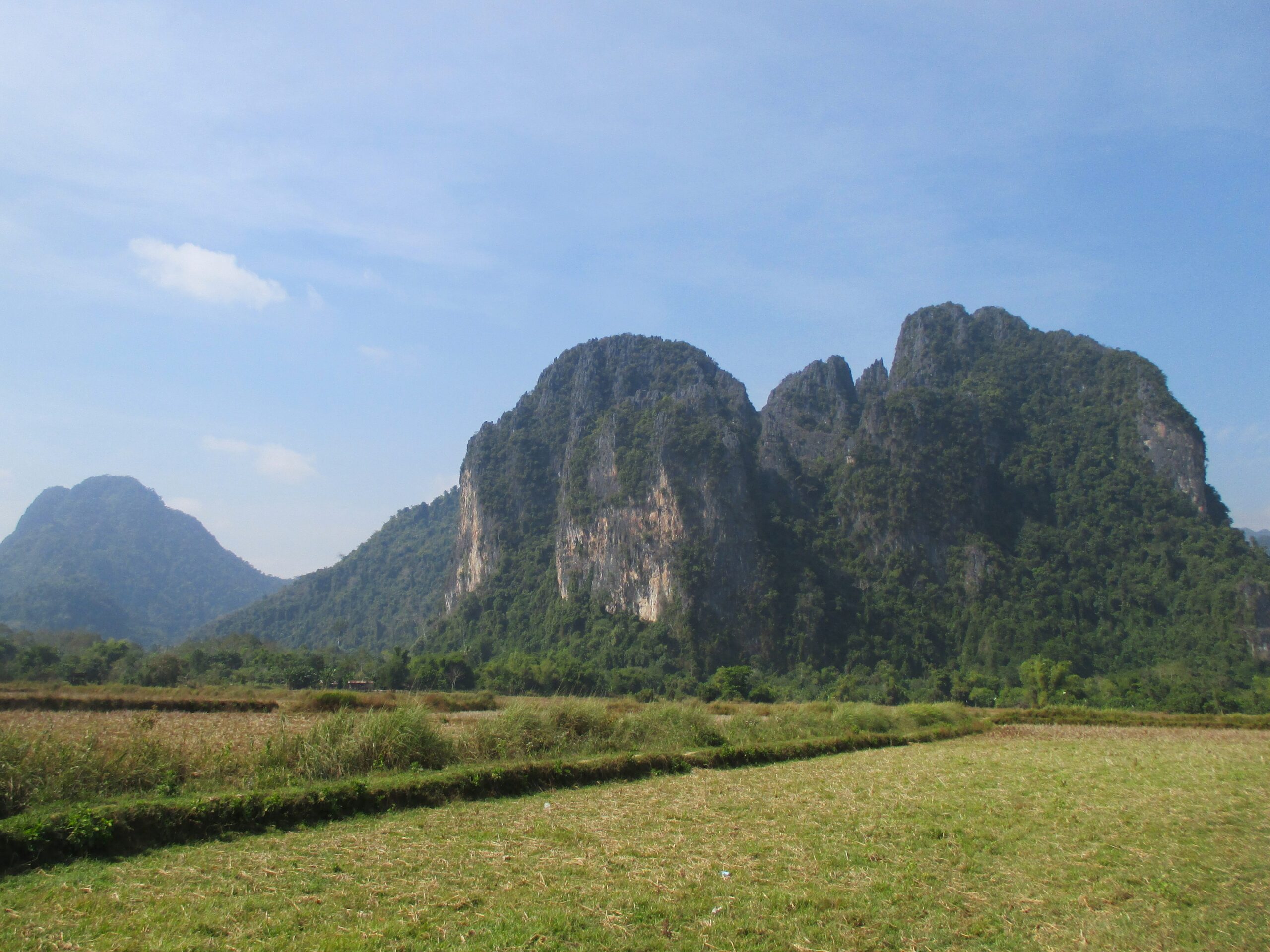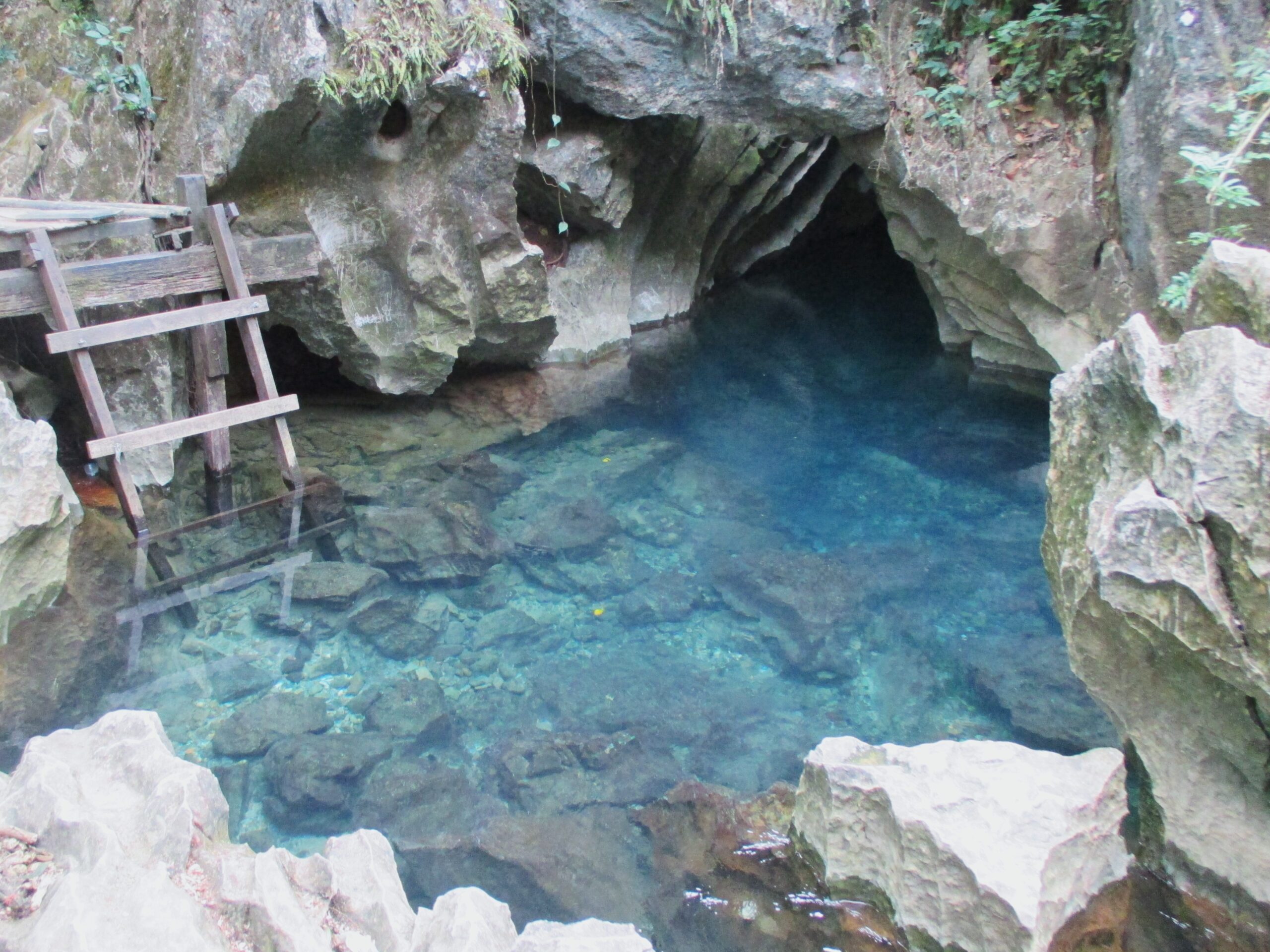Backpacking In Laos
Arrival
We entered Laos from the northeast border with Vietnam, narrowly escaping trouble for overstaying the allotted 30 days. I enjoyed the initial venture into the country, despite it being on an uneven and bumpy dirt road. This route allowed us to see an undeveloped region of Southeast Asia; we passed untouched foliage as we followed the slow, winding roads on the green mountainsides. We also passed small villages on the roadside, wooden and brick structures, housing mixed generations of families, with their livestock roaming nearby.
We broke up the journey to with an overnight stay in the small town of Muang Xai, that sits on a junction in the North of Laos. While there, we headed to the temple that sat elevated above the town. The temple – typically of Southeast Asia – provided a wide-ranging view of the surrounding area, including the mountains we drove down from.




Luang Prubang
The next day, we took yet another bus ride, southeast from Muang Xai. The start of this journey was a similar road, full of twists and turns, tight corners, and slow mountain climbs. Fortunately, the latter half was a smoother trip, to the tourist centre of Luang Prabang. This town is clearly heavily influenced by tourists, with a large market with stalls selling food and goods for Westerners to take home.
Luang Prabang is a pleasant town to wander around. We could take a seat and have a short wait for a tasty meal to be served. The markets stayed open late and had a fun atmosphere, for both locals and visitors, featuring music and dancing in the streets.


Luang Prubang
The next day, we took yet another bus ride, southeast from Muang Xai. The start of this journey was a similar road, full of twists and turns, tight corners, and slow mountain climbs. Fortunately, the latter half was a smoother trip, to the tourist centre of Luang Prabang. This town is clearly heavily influenced by tourists, with a large market with stalls selling food and goods for Westerners to take home.
Luang Prabang is a pleasant town to wander around. We could take a seat and have a short wait for a tasty meal to be served. The markets stayed open late and had a fun atmosphere, for both locals and visitors, featuring music and dancing in the streets.


Vang Vieng
The next destination – a further five hours south – was Vang Vieng. This bus journey was definitely worth it, though. After a couple hours driving higher into the mountains, we stopped at a café overlooking an extraordinary valley. A stunning view. In fact, most of this ride was spent staring out the window, at the gorgeous mountains and valleys we were driving up and under.
Onto Vang Vieng, which has become oddly synonymous with tubing – thrill-seeking backpackers sitting in tyres, rushing down a strong river. For fun, apparently. Sadly, but unsurprisingly, there have been deaths resulting from it. This has led to the practice being halted at times – yet it somehow seems to be permitted again. I didn’t enquire into whether it was available during my stay.

Wandering
I did enjoy exploring the area around Vang Vieng – which is lovely – presumably it was these lush landscapes attracted backpackers in the first place. The river runs along the edge of town and the sun shone on the green plains alongside it. We crossed the bridge and strolled along one of the many trails.
We came to the foot of a limestone formation emanating vertically from the ground. We didn’t delve into the small, dark caves that disappear both underground and sometimes underwater. We contented ourselves with wandering in and out of the large rock pillars, a world away from the bars blasting loud music in town.



Vientiane
The fourth and final stop in Laos was the capital – Vientiane – a relatively quick two-hour bus trip south, on the edge of the border with Thailand. Vientiane is by far the most developed city in Laos, and the most densely populated; its population is almost ten times larger than the second largest city.
It is also home to the elaborate, fantastically bright, gold-plated Buddhist stupa – Pha That Luang. For a country that is considered amongst the poorest nations in the world, it is an almost surreal sight to see this gold structure shining high up into the skyline. It is a must-see, regardless. There are also remnants of colonial buildings dotted around town, amongst various temples. As well as the Patuxay Monument – a memorial to those who died fighting for independence from France. The architecture makes Vientiane an enjoyable city to walk around, even though the temperature had risen again, and I would get a sweat on in just a few strides.




Leaving
The trip out of Vientiane was on a train back to Thailand, for my final few days on the continent. When we arrived at the station it was almost entirely deserted – primarily because we arrived far too early and had to wait hours for the train. It did become busier as sensible people arrived shortly before the train. The journey was quite hectic, particularly when changing at the border. It felt like being part of a large migration, as watched other passengers lugging bags in and on top of the carriages.
Two weeks wasn’t enough to fully explore Laos. The short trip through the well-trodden paths didn’t leave me with the feeling I uncovered the opportunities the country offers travellers. I have heard of eco-tourism projects that help conserve pockets of wildlife remaining in their national parks, that I would love to see on a return visit.
